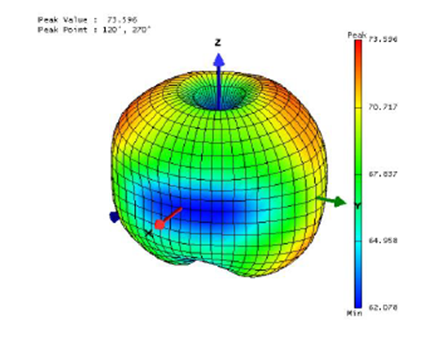How does signal strength impact Dispensers, Tags, & Wi-Fi?
“Signal strength” is a simple phrase that contains a lot of complications and factors which impact our system. Here’s a bit of a primer on how we can break that down.
Jump to:
RSSI
We look at RSSI (Received Signal Strength Indicator) to measure how well a device can hear a signal. RSSI is represented in dBm (decibel-milliwatts).
- dBm can be interpreted just like a regular number on the number scale. The stronger the signal strength, the higher the dBm value.
- As long as we understand that -78 < -50 (since they’re negative numbers) then -78dBm is weaker than -50dBm, etc.
You will see dBm referenced in the raw data for each of the component pieces.

Dispensers
Our Guardian™ dispenser antenna is only 3mm in size, which limits the range and strength of signal it can read. This is beneficial in that, for security purposes, we only want the dispenser looking for and recognizing activity relative to the dispenser within close range. Knowing this, tag signal strength and Wi-Fi network strength will have a big impact on what information is picked up by the dispenser and how that data is sent to the Insights and then processed.
The dispenser antenna has an (almost) omni-directional sensitivity, sending waves outward in all directions. It looks a bit like an apple!

Tags
Tag signal strength is often used as an analog to represent distance from a given dispenser. The simplest assumption is that the further away a tag is, the weaker the signal will be. Though helpful, these values must be taken as general expected behaviors, not true rules, due to the impact of external factors on any given tag’s signal strength at a given time.
We’ve empirically shown that the mean RSSI, averaged over multiple readings, follows a log-linear relationship to tag distance. This is what we expect from theory (inverse-square law) too. The approximate mapping between mean RSSI and distance is as follows, extrapolating from the regression fit:
Distance of tag (ft) | Mean RSSI (dBm) |
|---|---|
1 | -64 |
2 | -67 |
5 | -71 |
10 | -74 |
20 | -76 |
30 | -78 |
However, we also know that there is:
- significant variation in the RSSI of a single stationary tag
- significant variation in the RSSI distribution across different tags placed at the same distance
- non-trivial overlap between the distribution of RSSI values for tags at different distances
When a tag sends out a “chirp,” movement could sometimes translate into unexpected placement readings. For example, if a user is approaching a dispenser and the tag picks up at the “3 second” mark vs the “6 second” mark in a scan it could read as that person seeming further away than they ultimately were.
Secondly, a chirp itself could be interrupted. If you picture a single wave - one chirp - radiating out from a tag, that wave will keep moving in one direction. If it encounters any interference then it will collide with that interference (object or wave) and either be absorbed or bounce off.
A third possibility is that more than one tags chirp at the exact same instant (this can happen if multiple tags are in the vicinity). Like two people talking at the same time, the chirps impact each other and don’t appear as a valid chirp from the dispenser’s perspective.
These actions could cause the tag’s dBm to read as stronger or weaker than expected, or could cause the dispenser to miss the tag entirely.
The most common examples of “noise interference” include:
- Another tag
- Another BLE device of some sort
- Microwave oven
- Electrical noise sources
- Other sources of 2.4GHz noise in the location
- Metal appliances or objects that block signal, either freestanding or in wall construction
- Liquid volumes, particularly human bodies
The more tags, for example, the more interference…which then increases the chances for RSSI readings that are not as expected. These are the baselines we build accommodations for in our algorithms and processing of tags.
Wi-Fi
Like tags, Wi-Fi signals can be complicated by other signals or “noise” in an environment. The Wi-Fi signal itself is also 2.4GHz and will interfere with BLE if sufficiently strong - i.e., a local Wi-Fi signal will be more likely to interfere than one further away (weaker).
Other technologies in place within a given environment will impact RSSI, too. For example, newer router designs with MIMO antennae, or users with a mesh network that switches between devices, will complicate getting a clear signal reading.
Generally, though, and in its current form: we’ve found that about -60dBm or higher (like -50dBm) is a good signal reading, while readings much lower than -70dBm are marginal.